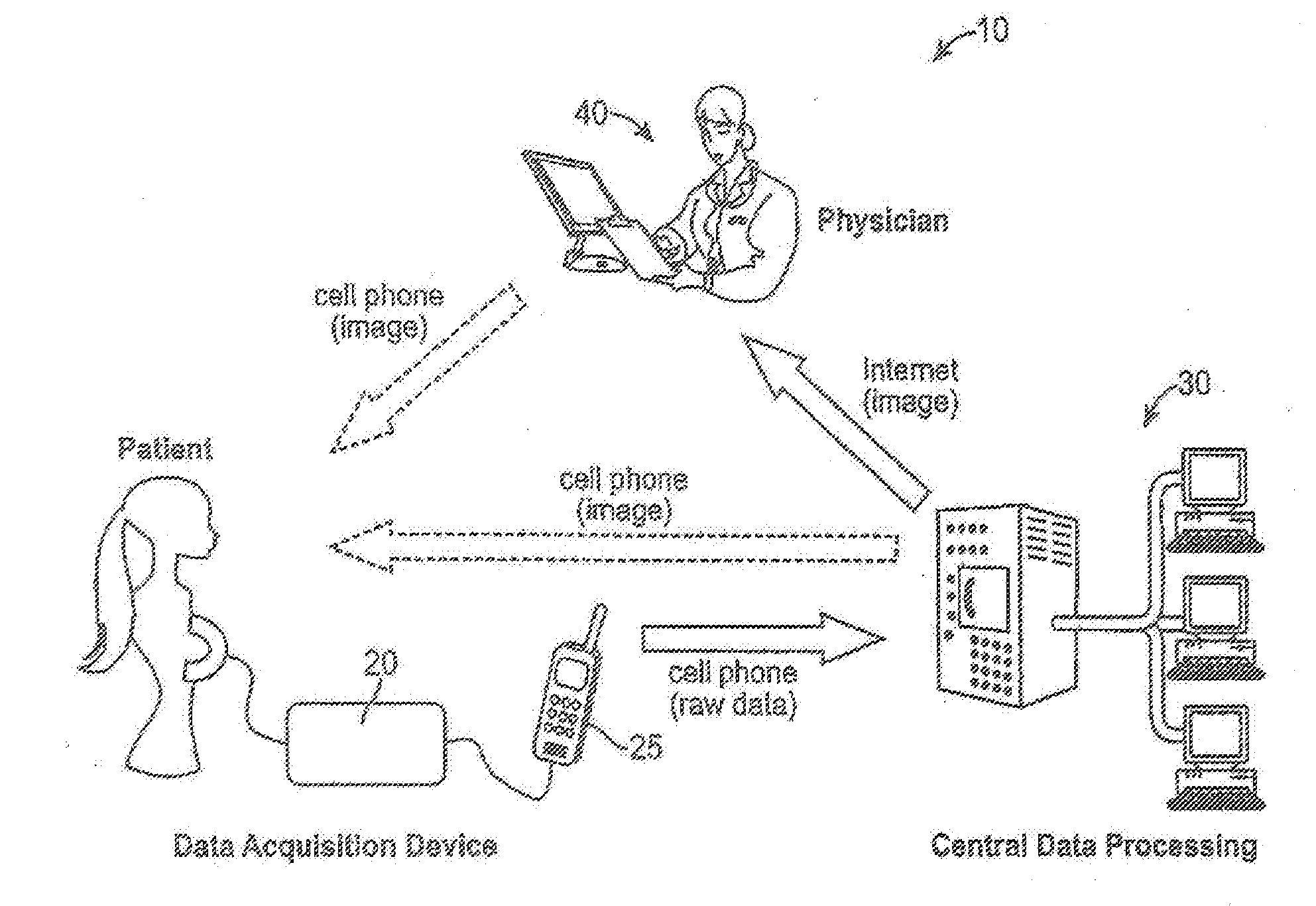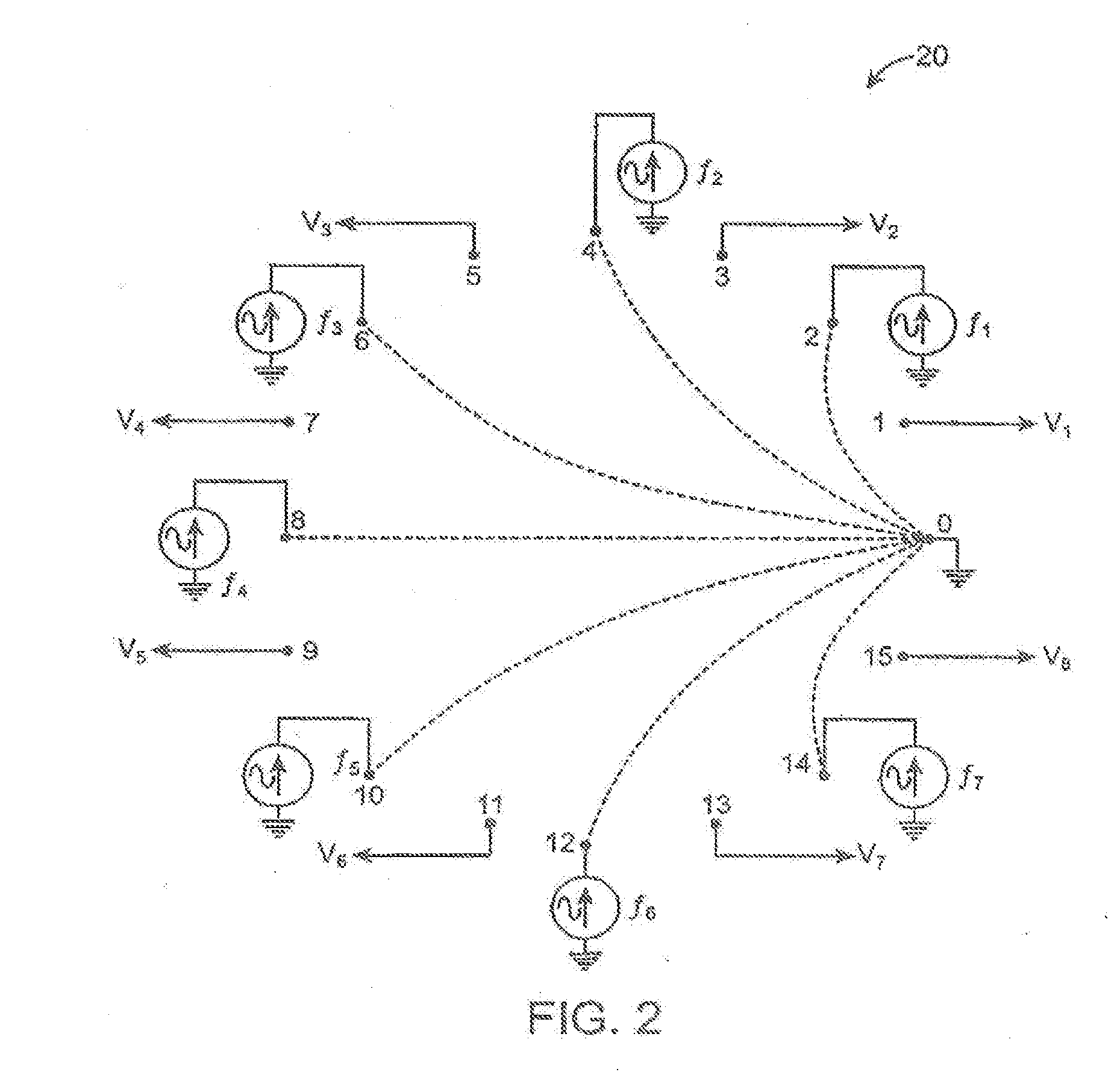Wireless technology as a data conduit in three-dimensional ultrasonogray
a three-dimensional ultrasonogray and data conduit technology, applied in the field of medical imaging systems, can solve the problems of increasing the cost of medical imaging equipment shipping from developed nations into lesser-developed nations, requiring trained operators to use, and updating, so as to reduce the cost of imaging, improve the accuracy of diagnosis, and increase the cost of health technology
- Summary
- Abstract
- Description
- Claims
- Application Information
AI Technical Summary
Benefits of technology
Problems solved by technology
Method used
Image
Examples
Embodiment Construction
(a) Medical Imaging Systems:
[0033]In accordance with the present invention, a conventional cellular phone is used as an integral and enabling component of a spatially dispersed medical imaging system.
[0034]In one embodiment, the cellular phone and a data gathering device are used at a patient site, with the cellular phone communicating with a multi-server processing center (possibly in a completely different part of the world). The multi-server processing center simultaneously serves many patient data gathering devices in the field. The multi-server processing center thus acts as a central image reconstruction and data processing facility.
[0035]Specifically, the cellular phone at the patient site transfers the raw data to an image reconstruction and data processing facility which then returns a reconstructed image through the cellular phone. The cellular phone is also used to display the image and for some local processing at the patient site. As will be explained, the fact that the...
PUM
 Login to View More
Login to View More Abstract
Description
Claims
Application Information
 Login to View More
Login to View More - R&D
- Intellectual Property
- Life Sciences
- Materials
- Tech Scout
- Unparalleled Data Quality
- Higher Quality Content
- 60% Fewer Hallucinations
Browse by: Latest US Patents, China's latest patents, Technical Efficacy Thesaurus, Application Domain, Technology Topic, Popular Technical Reports.
© 2025 PatSnap. All rights reserved.Legal|Privacy policy|Modern Slavery Act Transparency Statement|Sitemap|About US| Contact US: help@patsnap.com



